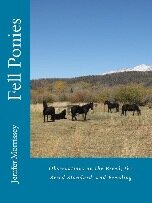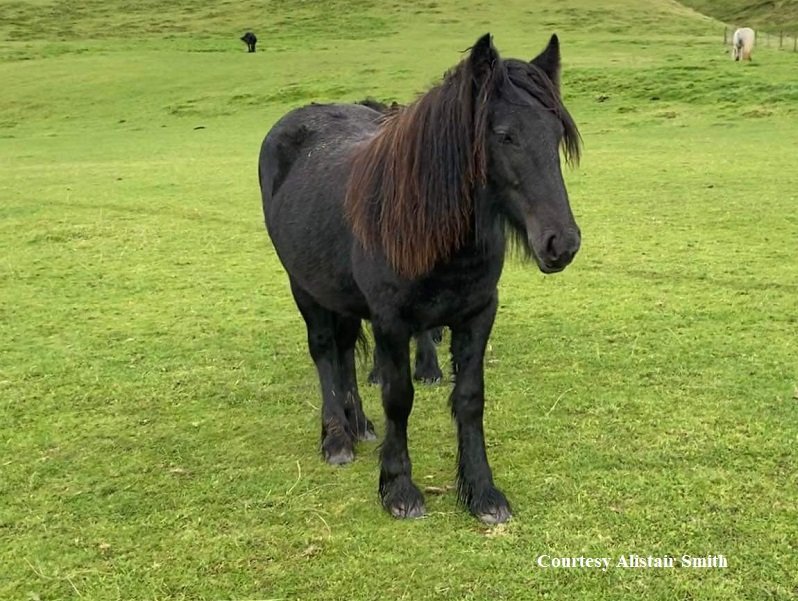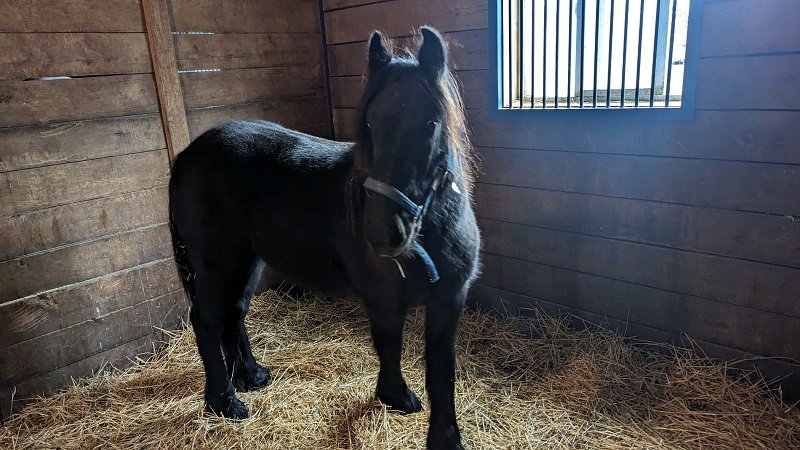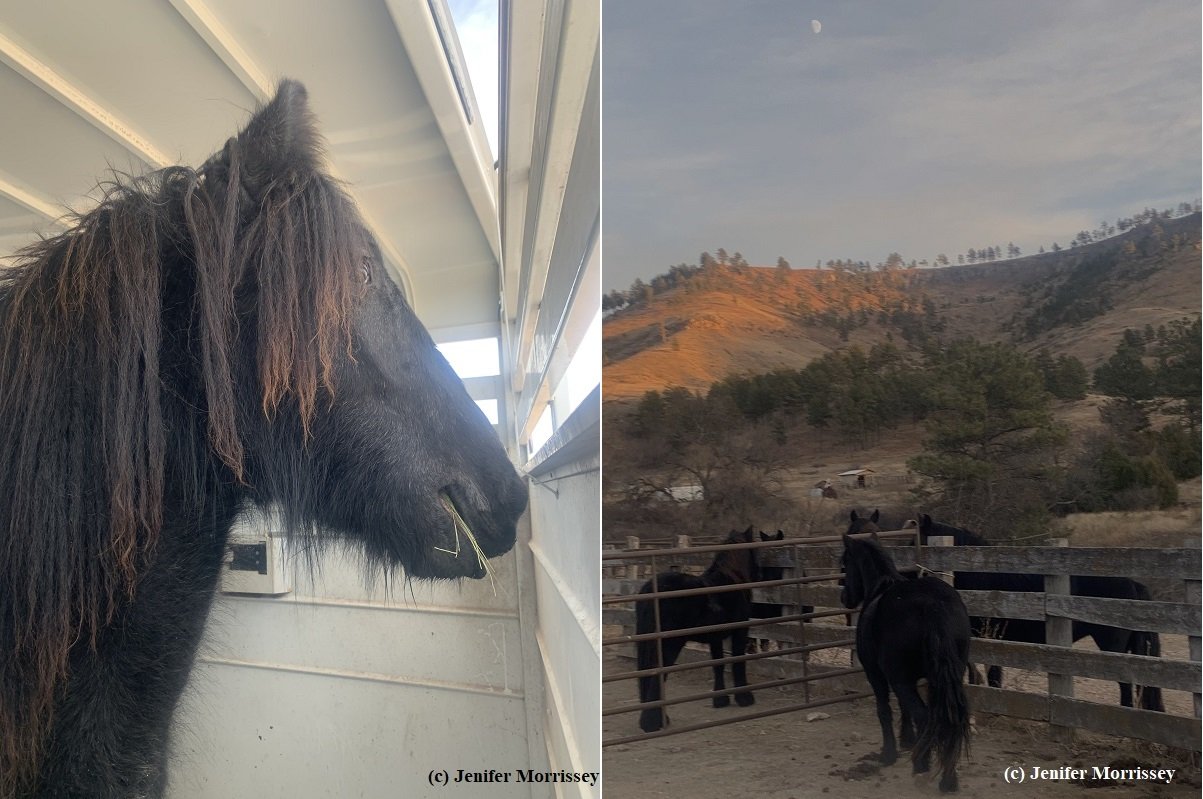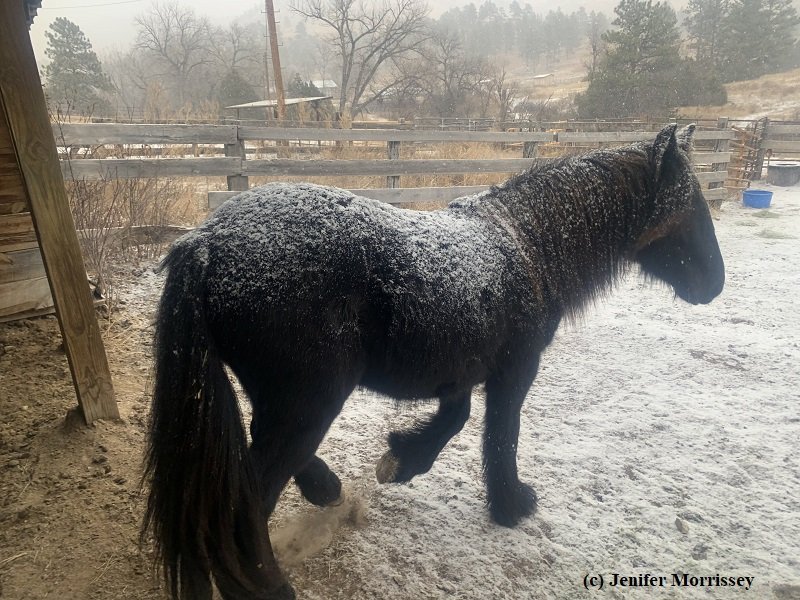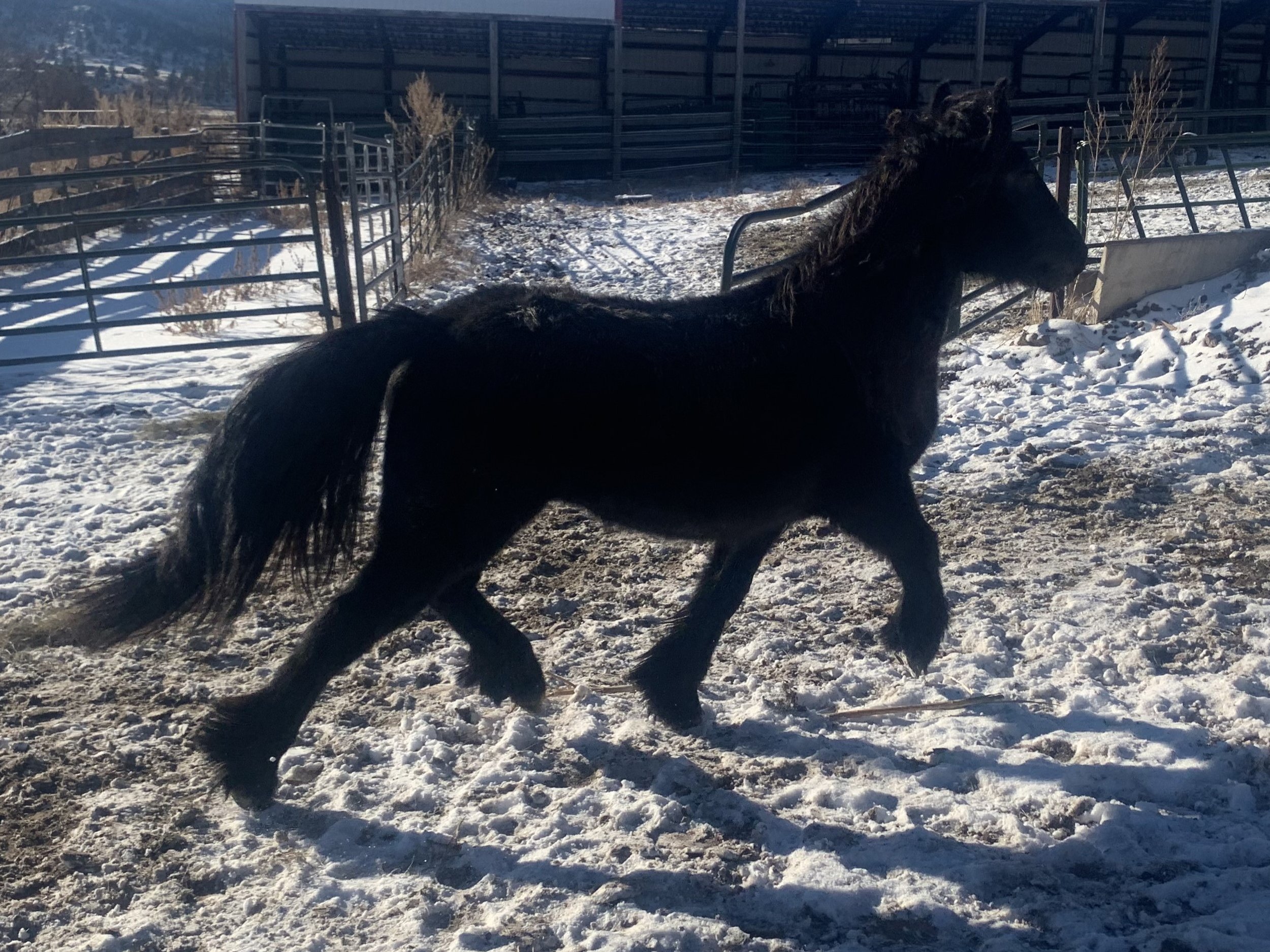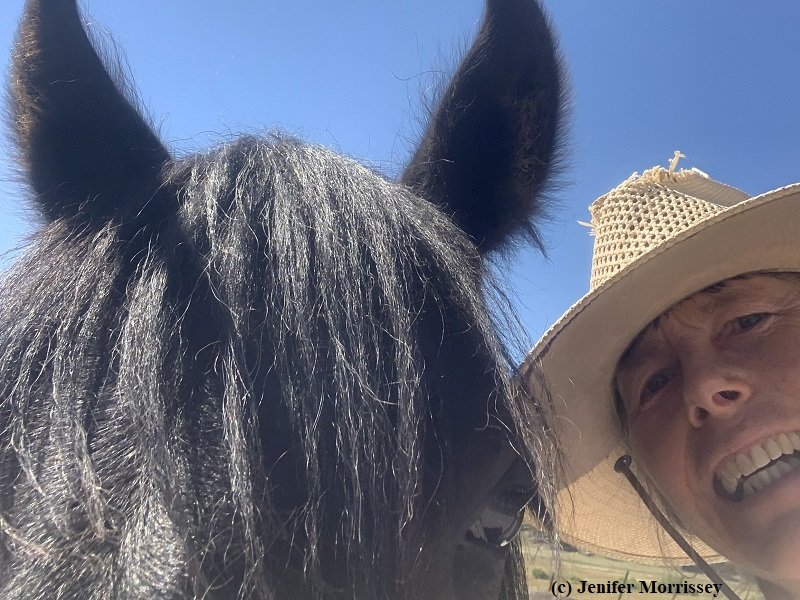Grateful for Grandma
/I came inside mid-afternoon soaked to the skin. Not long after, I received a text from a friend saying she had just gotten home and felt like she had driven through a hurricane. I’ve never experienced a hurricane, but I definitely knew why my friend said what she said. The wind was lashing the trees, and rain was pouring down, or more accurately, pouring at an angle. I had gotten soaked doing midday chores with the ponies. I was happy that the heaviest rain held off until I got most of my chores done.
Marie, as usual, coming to say hello despite having to come out into the storm to see me. Imperial is behind her. She also greeted me after Marie did. Love these two!
While doing chores, I was extremely impressed with my new filly Drybarrows Imperial who was running back and forth in her pen because of the wind and heavy rain. When it came time to be haltered and led out, though, she stood quietly and then led perfectly to be put out on the pasture. I then put my other yearling Willowtrail Marie out with her, as well as Grandma pony, Bowthorne Matty. I was pleased that the two young girls followed Grandma off towards the pasture, unlike their behavior just a day before. I had put this new herd together to help Imperial learn the extent of and hazards of the hill pasture. The day before, the young girls had stayed close to the barn initially while Grandma headed out to graze. Later I had an opportunity to be grateful to Grandma, as she had collected the two young girls from the barn and taken them out to the hill.
When it was time to go back out into the storm for my late afternoon/early evening check of the ponies, I knew I needed to be more thoughtful about my choice of clothing. I was certain to get soaked to the skin again, so I donned long underwear under my regular outerwear. Normally I wouldn’t gear up so conservatively in moderate temperatures, but I knew I would need to keep warm while wet.
Stepping out the door, I was grateful to Grandma again. She was easily in view, clearly soaked to the skin but grazing calmly with her butt to the wind. However, I didn’t see the two youngsters. I went out to see Matty, who was just past the two foaling sheds, and asked her where the girls were? Then I looked over my shoulder and they were both in one of the sheds, clearly also soaked to the skin but out of the wind. When they saw me, they came to say hello, and I could tell they were shivering.
I thanked Grandma for letting me know that she was doing her job, both showing the girls how to get out of the storm and making herself visible so I knew the status of things. Then she turned and set off at a trot up the hill with the two girls quickly following. I was grateful to Grandma yet another time because movement was the best antidote there could be for being chilled but with no end of the storm in sight.
Originally my plan had been to take Grandma and the girls back to the barn and put a different set of ponies on the hill for the night. Imperial wasn’t yet as accustomed to our green grass as I wanted her to be before spending a night on the hill. And the other two members of the Grandma herd were making it clear that their herd had been fractured and they weren’t happy about it. However, the strength of the storm suggested that Grandma indeed had the best plan, so I left her to her job and went to the barn to make the rest of the ponies as comfortable as I could for the night.
At the height of the storm, I couldn’t tell these two apart without stopping to really study them, which wasn’t appealing with sheets of water coming down. One is two year old Bracklinn Phoebe and the other is three year old Willowtrail Lettie. Can you tell which is which? The photograph is soggy in appearance; apparently my camera didn’t like the storm either!
While the intensity of the weather kept me pretty focused on the tasks at hand at the barn, I did find myself astonished and humbled while feeding in one paddock. I couldn’t easily tell the difference between my two-year-old imported filly and my three-year-old homebred filly in their rain-soaked states. But that’s a good thing; it means I’m being consistent on type in my choice of stock! That kept me smiling in the sheeting rain.
The next morning, the wind had subsided just a little bit but the rain had ended. We had over 2” in about 12 hours, while places not twenty miles from us had almost nothing. My neighbor said the storm was a record-breaker because his granddaughter’s large play structure got rolled across his backyard for the first time ever. Another friend said it was the longest, hardest, most sustained wind they’d ever seen. I was grateful to see that my pony sheds, substantially built but also moveable, were still upright and in place.
I stopped first at the barn to do a quick check of the ponies there then headed to where I thought I could see Grandma. Sure enough, she was once again near the foaling sheds, with one youngster lying next to where she was grazing. I was concerned as I approached, though, that I was missing my other yearling. When I got closer, I saw that the other filly was lying in one of the sheds nearby. Once again I was grateful to Grandma for making sure I could easily learn all was well and that she made sure all was well! Not long after, while I was busy doing chores at the barn, she moved the fillies to a location out of the chilly and increasing wind.
Grandma and her charges enjoying the enlivened green grass after the storm.
When I got done with morning chores at the barn, it was time to bring Grandma and her girls in. It was a half mile hike each direction to do so, and in my mud boots, it wasn’t a walk I looked forward to taking. But on the walk back, Grandma gave me another reason to be grateful. We were walking along (she’s nine months pregnant so I chose not to ride her) and suddenly she veered off our path and headed toward the fence. I remarked to her that that was strange behavior, but she wasn’t deterred. Not long after, I happened to look down just as she was stepping over a strand of wire fence. I asked her to stop and back up and found that two strands of the fence had been broken and were in the path frequently used by the ponies. Not good! I moved the wires out of the path and the pasture and then realized that more than simple fence repair was going to be required. A piece of equipment had been parked in a way to break the wires, so I would have to have help getting it moved before I could repair the fence. Thanks, Grandma, for bringing the situation to my attention!
I have said many times in my stewardship of Fell Ponies that one lifetime will not be enough with them. It’s times like these with Grandma that prove to me that I will feel the same everyday until my last day with them.
© Jenifer Morrissey, 2024
















